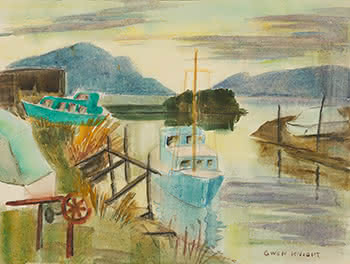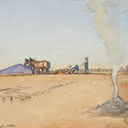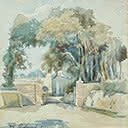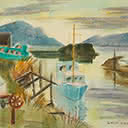Untitled, Boats
36 x 47.5 cm
est. $1,000 - 2,000
The youngest of eight children, Gwen Knight was born in Wellington and lived on The Terrace above Woodward Street in Wellington, before moving at the age of four to Hunters Hill in Sydney.
Displaying early musical talent, Knight attended the Sydney Conservatorium. Music remained her primary interest and chief pursuit until the First World War. Following the death of her father, she immersed herself in studying physiotherapy in Dunedin.
A chance encounter with Frances Hodgkins in St Tropez forever changed the course of Knight's life. Painting had always been a second love for Knight, and through the encouragement of Hodgkins, Knight began to believe in herself as an artist. After suffering an injury, which restricted her ability to play the piano, she concentrated more on her painting. She herself is the subject of three Hodgkins paintings, one of which, Pinewoods, is in the National Art Gallery.
Hodgkins introduced Knight to Hans Hoffman in Munich, who after seeing her work took her on as a pupil. A highly perceptive and sympathetic teacher, Hoffman emphasised the essential discipline of drawing and it is this that Knight always referred to as her most important influence. Knight also studied with André L'hote in Paris (a renowned exponent of Cubism) and Bissiére in London.
The artistic atmosphere of Europe in the twenties and thirties, enhanced by the long and happy friendship with Hodgkins. The onset of war however, took its toll and at the age of sixty, Knight returned to New Zealand in 1948, where, together with Helen Stewart, she became the core of a group of artists who were an important element of the Wellington art scene for almost twenty years.
The return to New Zealand saw Knight develop her own individual style; quiet and meditative, with restrained rhythmic colours and closely knit toning, structurally reflecting the training of L'Hote. In a time when cubism and its derivatives were grossly misunderstood in New Zealand, Knight stood apart from the rest.





